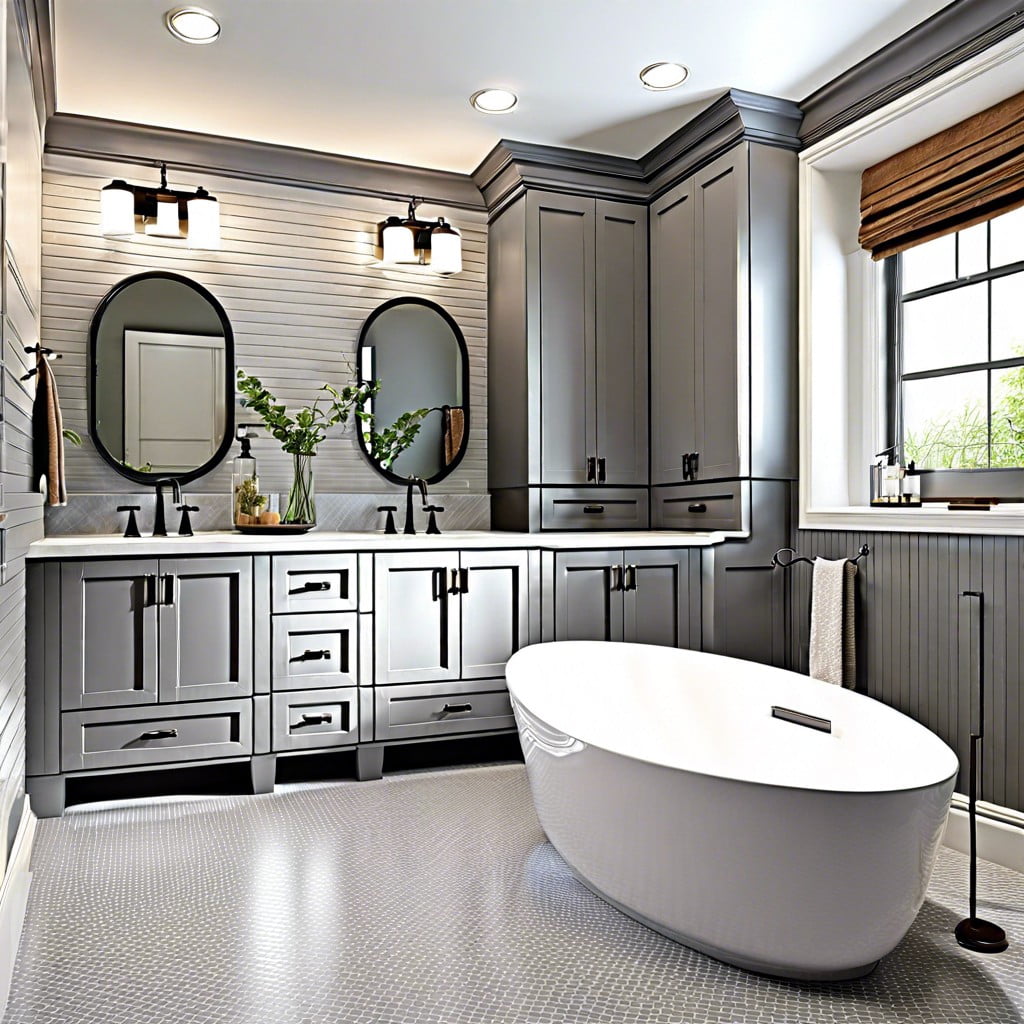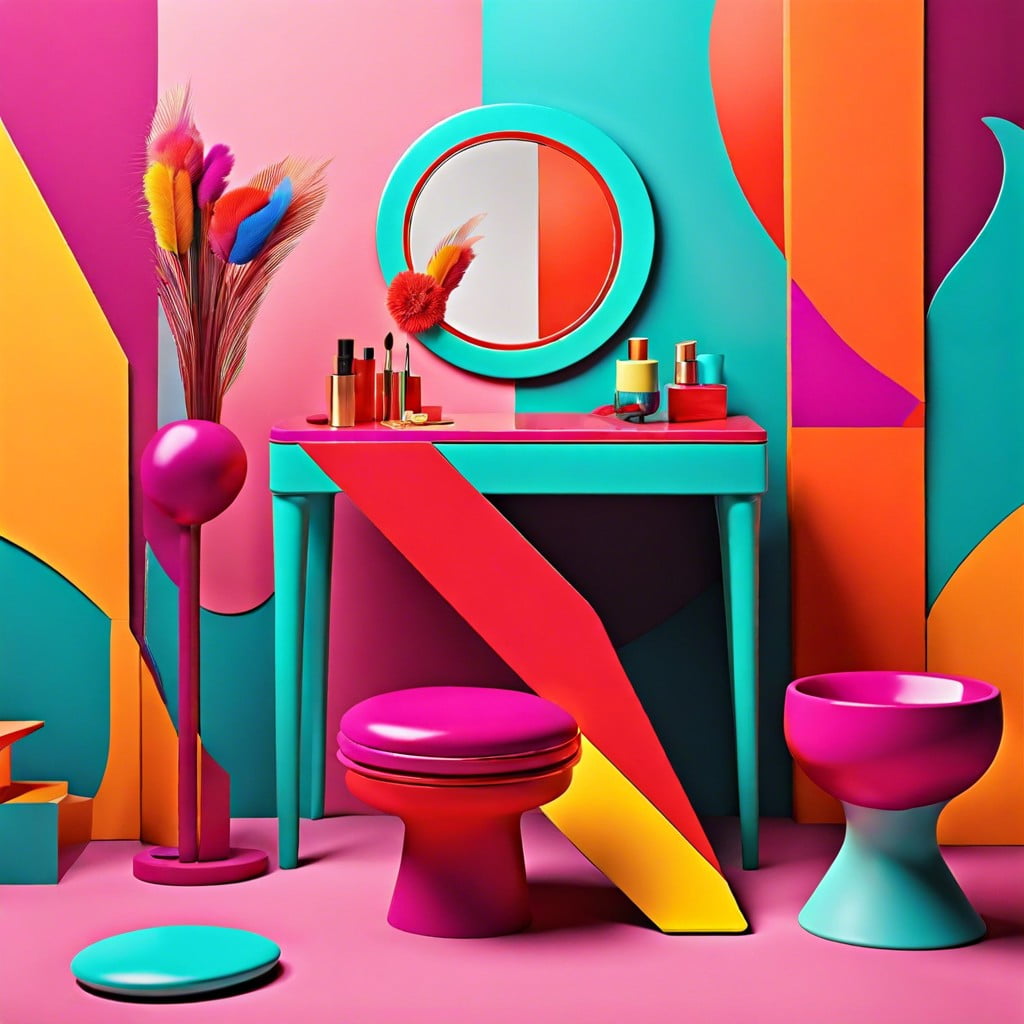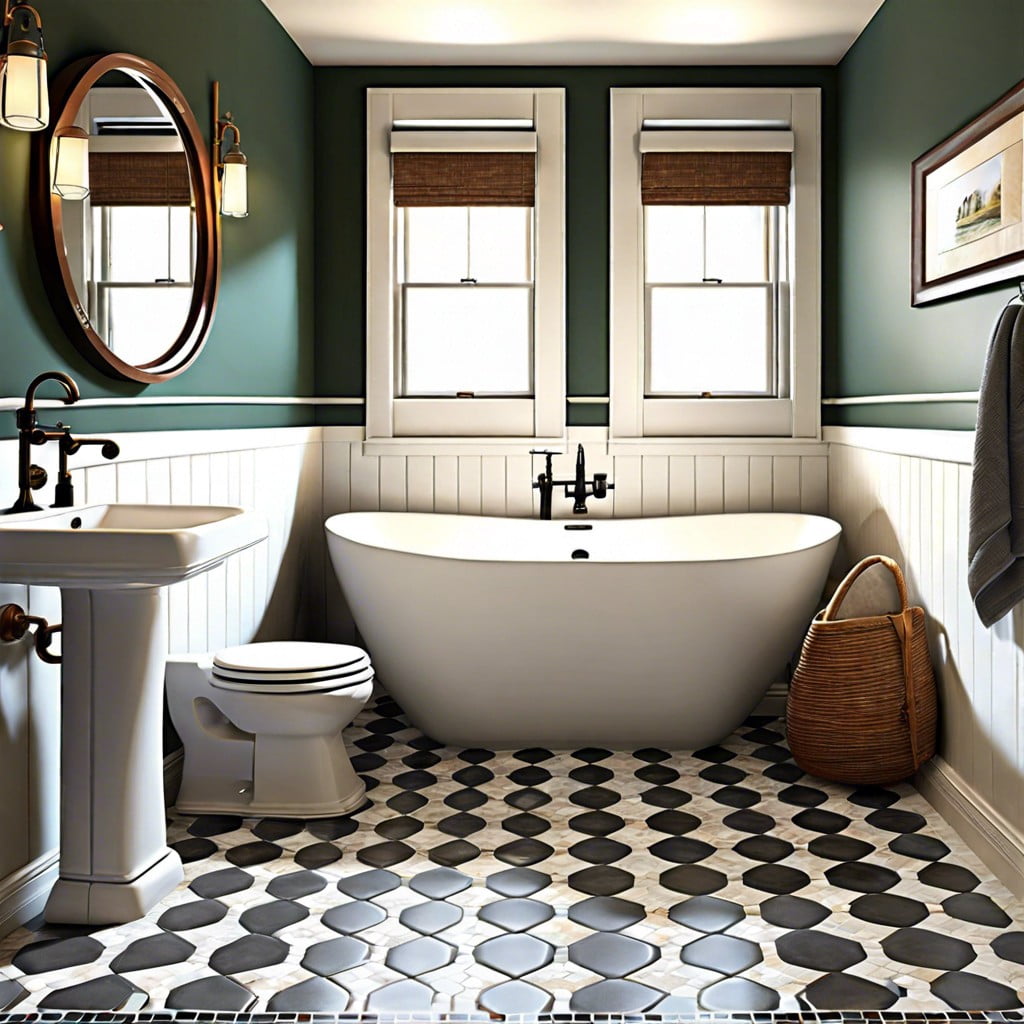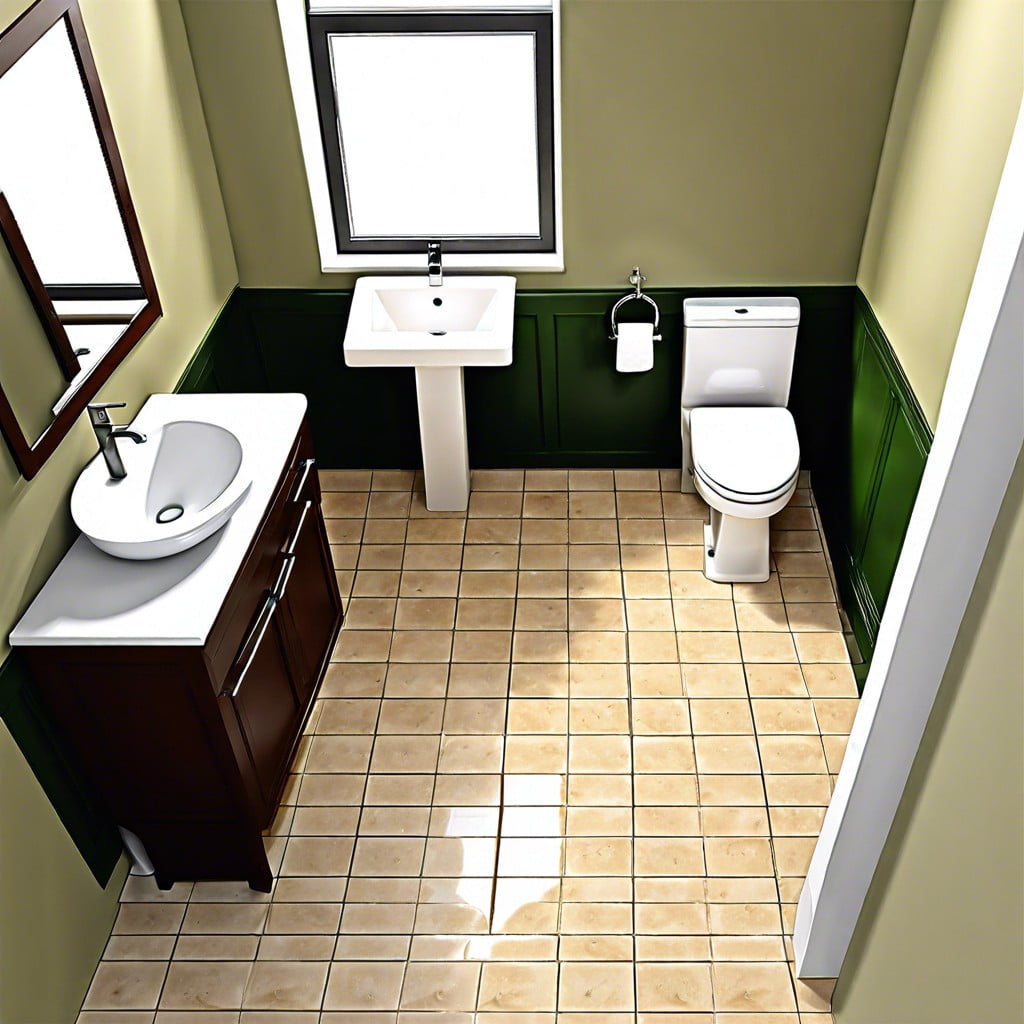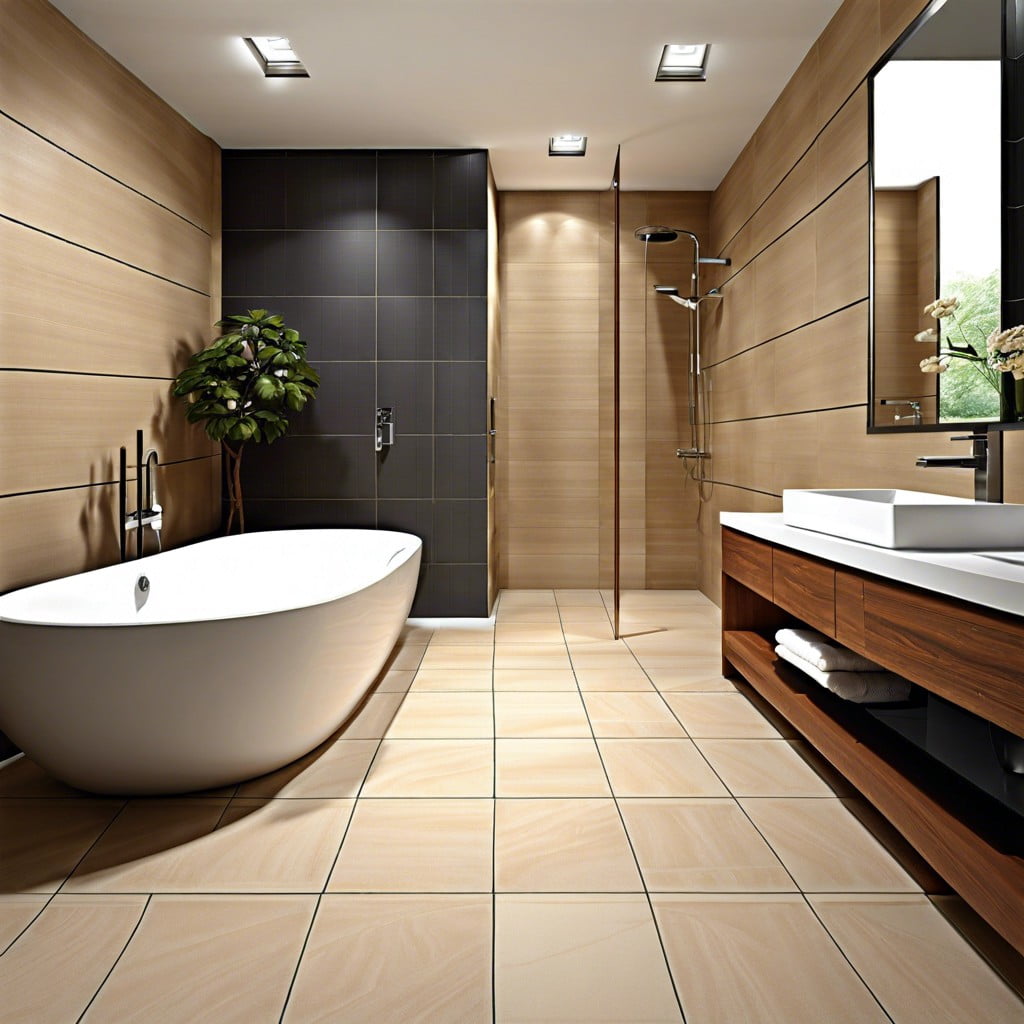Last updated on
Unraveling the intricacies of selecting the best paint for bathroom ceilings, this comprehensive guide provides thoughtful insights and practical suggestions that will aid in your decision-making process.
Key takeaways:
- Moisture-resistant formulations are necessary for bathroom ceilings.
- Semi-gloss or high-gloss finishes are more durable and easy to clean.
- Acrylic latex-based paint is ideal for bathroom ceilings.
- Look for paint with anti-fungal properties to prevent mold.
- Quality and proper application are key in mold prevention.
Moisture Resistant Bathroom Paint
Understanding the inevitable presence of steam and water splashes in a bathroom environment is crucial when selecting paint. Hence, moisture-resistant formulations are not just a recommendation; they are a necessity to ensure longevity and maintain aesthetics.
These paints are infused with water-repellent properties, which make them impervious to the pervasive humidity that could otherwise lead to peeling or mold growth.
Consider a product with a higher sheen—semi-gloss or high-gloss—since they offer a more durable, easy-to-clean surface.
Note, however, that higher sheen will highlight imperfections, so a balance between practicality and visual appeal must be struck.
Always look for paints labeled specifically for bathrooms or “kitchen and bath,” as these are engineered to tackle the unique challenges of these spaces.
What Type of Bathroom Ceiling Paint Should You Use?
Selecting the right type of paint for your bathroom ceiling is more than a matter of aesthetic; it’s a shield against the relentless assault of humidity and heat.
Opt for a semi-gloss or high-gloss finish; their smooth surfaces are less porous compared to flat finishes, making them less prone to trapping moisture. They also offer the practical advantage of simplified cleaning, allowing you to wipe away any mold or mildew without repainting frequently.
Moreover, while some may champion the use of ordinary interior paint with a mildew-inhibiting additive, this approach is a band-aid, not a cure. Dedicated bathroom paints, formulated with anti-microbial properties, inherently resist mold and mildew growth, affording long-term protection.
When it comes to material, acrylic latex-based paint is your ally in the bathroom’s battle against moisture. Its elastic quality means it can expand and contract without cracking, unlike oil-based paints that are far more susceptible to peeling in a steamy environment. Acrylic latex paint’s durability makes it a smart investment for a room exposed to daily humidity swings.
In essence, when selecting the best type of paint for your bathroom ceiling, focus on finishes and formulations designed to repel moisture and prevent mold, offering you a lasting barrier that both protects and pleases the eye.
Best Paint For Bathroom Ceilings To Prevent Mold
Keeping the relentless nature of bathroom humidity in mind, one must prioritize paint options with anti-fungal properties to curtail mold and mildew growth.
A satin or semi-gloss finish, often recommended for its lower porosity, allows for less water absorption and easier cleaning – critical in mold prevention.
Furthermore, opt for paints infused with mildewcides and fungicides. These chemical compounds actively inhibit mold growth on painted surfaces, providing long-term protection against the common bathroom blight of mold spores.
Quality does trump cost when it comes to mold prevention. Higher-end paints may come with a steeper price tag, but their enhanced durability and formulated resistance to bathroom-specific issues present a worthy investment for a mold-resistant bathroom environment.
Application, too, plays a pivotal role; ensure your bathroom is well-ventilated during the painting process to avoid trapping moisture, and follow the paint manufacturer’s guidelines for drying times—rushing the drying process could compromise the paint’s mold-resistant qualities.
Top Qualities to Look for in Bathroom Ceiling Paint
When selecting the ideal paint for your bathroom ceiling, the key characteristics to consider hinge not on color or brand alone, but on the paint’s intrinsic properties to combat the bathroom’s unique environmental challenges.
Mildew and Mold Resistance: A paint infused with anti-microbial additives thwarts the growth of these unsightly and unhealthy fungi, essential for a space where humidity and warmth are constant.
Peel and Crack Resistance: High-quality, durable paint ensures that your ceiling won’t succumb to the moisture-induced pitfalls of peeling or cracking over time.
Moisture Repellence: The more water-resistant the paint, the better it can handle the steamy showers and baths, keeping water condensation at bay.
Ease of Cleaning: Opt for a paint that allows you to wipe away any mold or mildew without the surface deteriorating, ensuring a long-lasting clean and fresh look.
Breathability: It should allow the ceiling to breathe to a certain degree, permitting moisture to escape and decreasing the risk of water buildup within the paint layers.
Remember, it’s not just choosing paint, it’s selecting a shield that ensures your bathroom ceiling stands up to the rigors of daily showers and baths with grace and longevity.
Final Thoughts
In selecting the ideal paint for your bathroom ceiling, prioritize durability and moisture resistance. The right choice will combat mold, withstand steam, and retain aesthetic appeal.
Taking the time for proper surface preparation and opting for a high-quality, semi-gloss or satin finish will ensure lasting results.
Don’t underestimate the power of a well-ventilated space to complement your paint choice—the combination is a formidable defense against bathroom dampness and mold growth.
Remember, investing in the right paint from the start pays off in the longevity and maintenance ease of your bathroom ceiling.
FAQ
What is the best paint to use on a bathroom ceiling?
In my view, water-based latex paint is the optimal choice for bathroom ceilings due to its moisture resistance, as opposed to the oil-based variety which has longer drying times, requires more complex cleaning, and potentially attracts mold.
What is the best paint for bathrooms with high humidity?
In high humidity conditions like bathrooms, satin or semi-gloss paint offers the best protection against cracking, peeling, and mildew.
Do you need waterproof paint for bathroom ceiling?
Undeniably, it’s imperative to use waterproof or water-resistant paint for bathroom ceilings to ensure a durable and resilient finish.
Should bathroom ceilings be flat white or semi-gloss?
In my opinion, bathroom ceilings fare better with a semi-gloss finish, particularly if the space encounters considerable moisture and humidity levels.
Have you considered the impact of paint color on overall bathroom aesthetics?
Undeniably, the choice of paint color significantly influences the overall aesthetics of a bathroom, creating different moods and visual impacts.
How do anti-mold paints fare in bathroom ceilings versus regular ones?
Anti-mold paints outperform regular ones on bathroom ceilings due to their superior mold and mildew resistance properties.
What are the pros and cons of using latex or oil-based paints for bathroom ceilings?
Latex paint is typically preferred for bathroom ceilings due to its moisture resistance, easy application, and quick drying time, however, oil-based paints excel in durability and stain resistance, making them a commendable, but less common choice.
Recap
